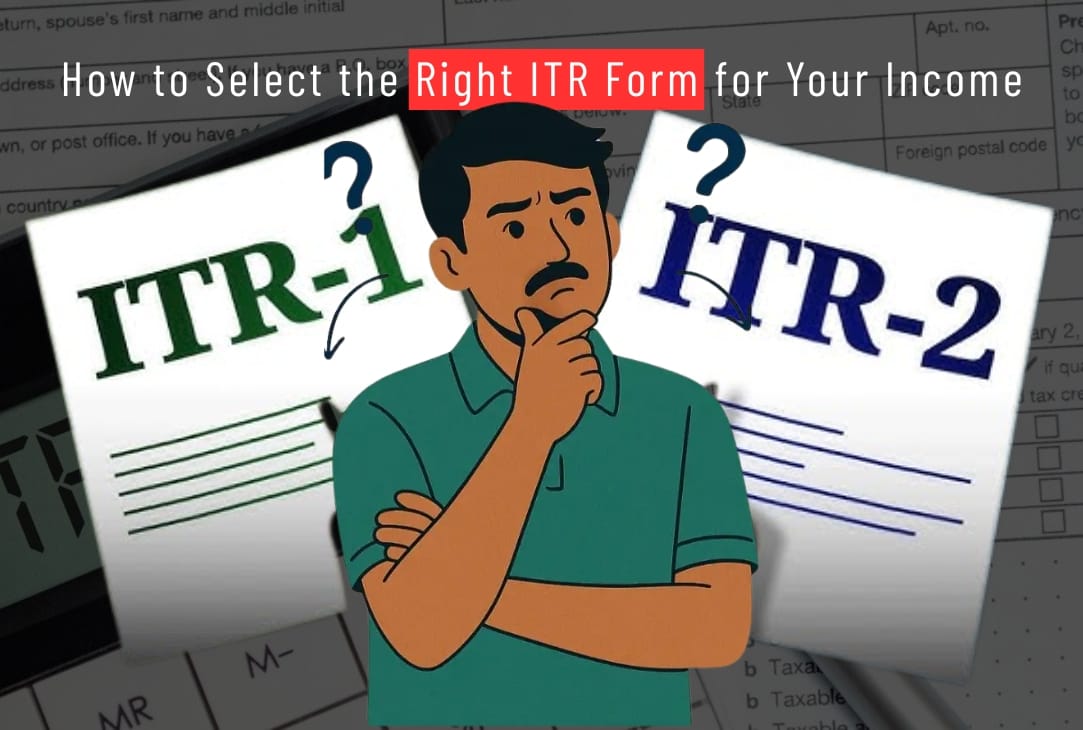Let’s be honest income tax forms can scare even the bravest among us. You hear “ITR forms” and instantly think of confusing codes, jargon-filled instructions and maybe even a little panic. But what if picking the correct ITR form could be just like picking the right pair of shoes? Practical, comfortable and made for your specific needs.
That’s exactly what this guide is about—making the process friendly, simple and approachable so you can file your taxes confidently with peace of mind.
Why Does the ITR Form Matter So Much?
Imagine spending hours baking a cake only to find out at the end that you used salt instead of sugar. Filing your return with the wrong ITR form feels just like that: a lot of effort wasted and you might not get the sweet outcome you deserve. Filing the wrong form can mean your return gets rejected or delayed and you risk missing important deductions refunds or worse—getting a scary notice from the tax department.
Getting to Know the ITR Forms—As People
Picture this: ITR forms are like helpful friends each one specializing in a certain area. Here’s how you might introduce them at a party:
- ITR-1 (Sahaj): For the salaried folks pensioners or those with a single house and interest income—if your total income is up to ₹50 lakh ITR-1’s your buddy.
- ITR-2: Got more than one house? Earned capital gains or foreign assets? ITR-2’s got your back.
- ITR-3: Are you a businessperson or professional hustler? ITR-3 is your go-to.
- ITR-4 (Sugam): For freelancers, small business people or those using presumptive taxation—ITR-4 keeps it simple if your turnover/income meets the easy criteria.
- ITR-5 6 7: Think of these as the specialists. Partnership firms and LLPs? ITR-5. Companies? ITR-6. Trusts and charities? ITR-7.
How to Pick Your Right ITR Form
1. Pause and Note ALL Your Income Sources
- Only salary or pension? You’re likely ITR-1.
- Sold property have share dividends or more than one house? Check out ITR-2.
- Running a business or freelancing? ITR-3 (or ITR-4 if going the presumptive route).
2. Is Your Total Income UNDER ₹50 lakh?
- This is key for ITR-1 and ITR-4. Over ₹50 lakh? Skip these forms.
3. Do You Have Foreign Income or Assets?
- Then ITR-2 or 3 are your safe picks—not ITR-1 or 4.
4. Are You a Director or Have Unlisted Shares?
- You cannot use ITR-1 or 4—move to ITR-2 or ITR-3.
5. Agricultural Income Over ₹5000?
- Skip ITR-1 and ITR-4! (Don’t let that farm income trip you up.)
Final Thoughts: Don’t Just Select—Own the Process
Filing your taxes shouldn’t feel like a mysterious ritual. Instead it can be a moment where you take stock, reflect and feel a tiny bit proud for taking care of grown-up stuff. Start by understanding your income story then see which form fits you best. With a bit of clarity and patience you’ll find the right ITR form isn’t just a box to check—it’s a tool to help you do things right and maybe even save a little money along the way.

I am a digital marketing executive as well as content writer in the income tax and credit cards category. My goal is to provide simple, interesting and reliable information to readers through my articles so that they always stay updated with the world of income tax and credit cards.




Take a shot at Lucky Jet and see why it’s popular.
weed edibles for relaxation discreet calm
Ki88, short and sweet! Let’s see if the games are the same. Quick access maybe? Worth a look. See for yourself here ki88